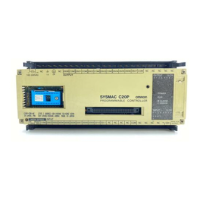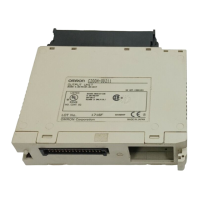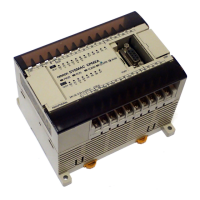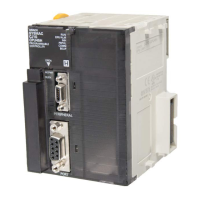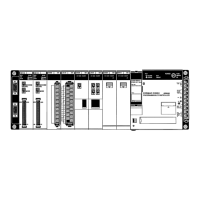Glossary
604
factory computer A general-purpose computer, usually quite similar to a business computer, that
is used in automated factory control.
FAL error An error generated from the user program by execution of an FAL(006) instruc-
tion.
FALS error An error generated from the user program by execution of an FALS(007) instruc-
tion or an error generated by the system.
fatal error An error that stops PC operation and requires correction before operation can
continue.
FINS See
CV-mode
.
flag A dedicated bit in memory that is set by the system to indicate some type of oper-
ating status. Some flags, such as the carry flag, can also be set by the operator
or via the program.
flicker bit A bit that is programmed to turn ON and OFF at a specific frequency.
floating-point decimal A decimal number expressed as a number (the mantissa) multiplied by a power
of 10, e.g., 0.538 x 10
–5
.
force reset The process of forcibly turning OFF a bit via a programming device. Bits are usu-
ally turned OFF as a result of program execution.
force set The process of forcibly turning ON a bit via a programming device. Bits are usu-
ally turned ON as a result of program execution.
forced status The status of bits that have been force reset or force set.
frame checksum The results of exclusive ORing all data within a specified calculation range. The
frame checksum can be calculated on both the sending and receiving end of a
data transfer to confirm that data was transmitted correctly.
function code A two-digit number used to input an instruction into the PC.
GPC An acronym for Graphic Programming Console.
Graphic Programming Console A programming device with advanced programming and debugging capabilities
to facilitate PC operation. A Graphic Programming Console is provided with a
large display onto which ladder-diagram programs can be written directly in lad-
der-diagram symbols for input into the PC without conversion to mnemonic
form.
hardware error An error originating in the hardware structure (electronic components) of the PC,
as opposed to a software error, which originates in software (i.e., programs).
hexadecimal A number system where all numbers are expressed to the base 16. In a PC all
data is ultimately stored in binary form, however, displays and inputs on Pro-
gramming Devices are often expressed in hexadecimal to simplify operation.
Each group of four binary bits is numerically equivalent to one hexadecimal digit.
hold bit A bit in memory designated to maintain status when the PC’s operating mode is
changed or power is turned off and then back on.
hold Rack A Rack designated to maintain output status when the PC’s operating mode is
changed or power is turned off and then back on.
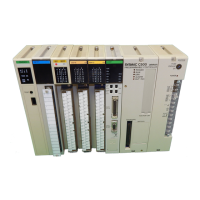
